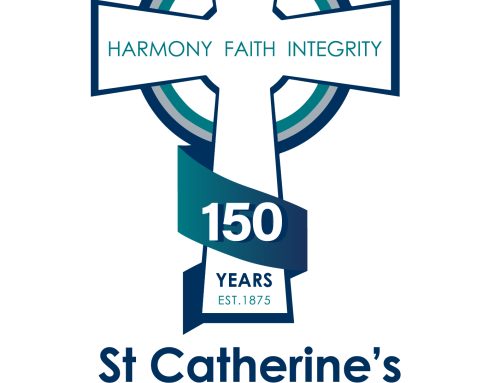The First Martyrs of the Holy Roman Church – 30 June
There were Christians in Rome within a dozen or so years after the death of Jesus, though they were not the converts of the “Apostle of the Gentiles” (Romans 15:20). Paul had not yet visited them at the time he wrote his great letter in 57-58 A.D.
There was a large Jewish population in Rome. Probably as a result of controversy between Jews and Jewish Christians, the Emperor Claudius expelled all Jews from Rome in 49-50 A.D. Suetonius the historian says that the expulsion was due to disturbances in the city “caused by the certain Chrestus” [Christ]. Perhaps many came back after Claudius’ death in 54 A.D. Paul’s letter was addressed to a Church with members from Jewish and Gentile backgrounds.
In July of 64 A.D., more than half of Rome was destroyed by fire. Rumor blamed the tragedy on Nero, who wanted to enlarge his palace. He shifted the blame by accusing the Christians. According to the historian Tacitus, many Christians were put to death because of their “hatred of the human race.” Peter and Paul were probably among the victims.
Threatened by an army revolt and condemned to death by the senate, Nero committed suicide in 68 A.D. at the age of 31.
St Thomas, Apostle – 3 July
Poor Thomas! He made one remark and has been branded as “Doubting Thomas” ever since. But if he doubted, he also believed. He made what is certainly the most explicit statement of faith in the New Testament: “My Lord and My God!” and, in so expressing his faith, gave Christians a prayer that will be said till the end of time. He also occasioned a compliment from Jesus to all later Christians: “Have you come to believe because you have seen me? Blessed are those who have not seen and have believed” (John 20:29).
Thomas should be equally well-known for his courage. Perhaps what he said was impetuous—since he ran, like the rest, at the showdown—but he can scarcely have been insincere when he expressed his willingness to die with Jesus. The occasion was when Jesus proposed to go to Bethany after Lazarus had died. Since Bethany was near Jerusalem, this meant walking into the very midst of his enemies and to almost certain death. Realizing this, Thomas said to the other apostles, “Let us also go to die with him” (John 11:16b).
Patron Saint of Architects/Builders/Construction Workers/Surveyors, India, Pakistan, Sri Lanka, Theologians
St Elizabeth of Portugal – 4 July
Elizabeth is usually depicted in royal garb with a dove or an olive branch. At her birth in 1271, her father Pedro III, future king of Aragon, was reconciled with his father James, the reigning monarch. This proved to be a portent of things to come. Under the healthful influences surrounding her early years, she quickly learned self-discipline and acquired a taste for spirituality.
Thus fortunately prepared, Elizabeth was able to meet the challenge when at the age of 12, she was given in marriage to Denis, king of Portugal. She was able to establish for herself a pattern of life conducive to growth in God’s love, not merely through her exercises of piety, including daily Mass, but also through her exercise of charity, by which she was able to befriend and help pilgrims, strangers, the sick, the poor—in a word, all those whose need came to her notice. At the same time she remained devoted to her husband, whose infidelity to her was a scandal to the kingdom.
Denis, too, was the object of many of her peace endeavors. Elizabeth long sought peace for him with God, and was finally rewarded when he gave up his life of sin. She repeatedly sought and effected peace between the king and their rebellious son Alfonso, who thought that he was passed over to favor the king’s illegitimate children. She acted as peacemaker in the struggle between Ferdinand, king of Aragon, and his cousin James, who claimed the crown. And finally from Coimbra, where she had retired as a Franciscan tertiary to the monastery of the Poor Clares after the death of her husband, Elizabeth set out and was able to bring about a lasting peace between her son Alfonso, now king of Portugal, and his son-in-law, the king of Castile.
St Anthony Zaccaria – 5 July
At the same time that Martin Luther was attacking abuses in the Church, a reformation within the Church was already being attempted. Among the early movers of the Counter-Reformation was Anthony Zaccaria. His mother became a widow at 18, and devoted herself to the spiritual education of her son. He received a medical doctorate at 22, and while working among the poor of his native Cremona in Italy, was attracted to the religious apostolate. He renounced his rights to any future inheritance, worked as a catechist, and was ordained a priest at the age of 26. Called to Milan in a few years, he laid the foundations of three religious congregations, one for men, one for women, and an association of married couples. Their aim was the reform of the decadent society of their day, beginning with the clergy, religious, and lay people.
Greatly inspired by Saint Paul—his congregation is named the Barnabites, after the companion of that saint—Anthony preached with great vigor in church and street, conducted popular missions, and was not ashamed of doing public penance.
Anthony encouraged such innovations as the collaboration of the laity in the apostolate, frequent Communion, the Forty Hours devotion, and the ringing of church bells at 3:00 p.m. on Fridays. His holiness moved many to reform their lives, but as with all saints, it also moved many to oppose him. Twice his community had to undergo official religious investigation, and twice it was exonerated.
While on a mission of peace, Anthony became seriously ill and was brought home for a visit to his mother. He died at Cremona at the age of 36.
St Maria Goretti – 6 July
One of the largest crowds ever assembled for a canonization—250,000—symbolized the reaction of millions touched by the simple story of Maria Goretti. She was the daughter of a poor Italian tenant farmer, had no chance to go to school, never learned to read or write. When Maria made her First Communion not long before her death, she was one of the larger and somewhat backward members of the class.
On a hot afternoon in July, Maria was sitting at the top of the stairs of her house, mending a shirt. She was not quite 12 years old, but physically mature. A cart stopped outside, and a neighbor, 18-year-old Alessandro, ran up the stairs. He seized her and pulled her into a bedroom. She struggled and tried to call for help. “No, God does not wish it,” she cried out. “It is a sin. You would go to hell for it.” Alessandro began striking at her blindly with a long dagger.
Maria was taken to a hospital. Her last hours were marked by the usual simple compassion of the good—concern about where her mother would sleep, forgiveness of her murderer (she had been in fear of him, but did not say anything lest she cause trouble to his family), and her devout welcoming of Viaticum, her last Holy Communion. She died about 24 hours after the attack.
Alessandro was sentenced to 30 years in prison. For a long time he was unrepentant and surly. One night he had a dream or vision of Maria gathering flowers and offering them to him. His life changed. When he was released after 27 years, his first act was to beg the forgiveness of Maria’s mother.
Devotion to the young martyr grew, miracles were worked, and in less than half a century she was canonized. At her beatification in 1947, her 82-year-old mother, two sisters, and her brother appeared with Pope Pius XII on the balcony of St. Peter’s. Three years later, at Maria’s canonization, a 66-year-old Alessandro Serenelli knelt among the quarter-million people and cried tears of joy.
Patron Saint of Catholic Youth, Girls, Teenagers




